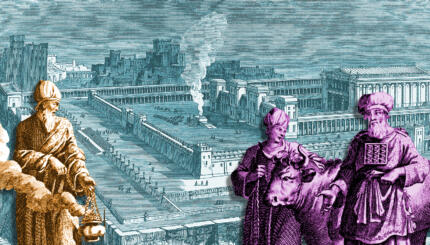Today I’m reading — and dreaming about — the novel The Invisible Bridge.
There’s something about Julie Orringer’s writing style that possesses her book with airs of Europe in the years just before and during World War II. It might be the thin, crisp sentences –the china cups of coffee with cream and the rococo architectural detailing that seem frozen in time, linked perfectly to the late 1930s. It might be the folktales, interlaced legends of rabbis casting spells and pauper boys winding up at rich society parties, which occupy that haunted space between tall tales and the stories of your grandparents’ youth.
Or it might just be the haunted-ness of the book itself. Apparently Orringer spent years researching the book, both the historical details and the details of her family. But once you crack the cover and start reading, everything fades away but the story itself.
Andras is a poor student from rural Hungary who studied architecture in Budapest and, at the book’s start, won a scholarship to continue his studies in France. A chance encounter on the eve of his departure gives him a mysterious quest to perform in Paris, and also provides him with contacts in his new city of residence, as well as a place to stay.
Like any epic, the book starts on mundane footing. Andras is a young man, still finding his footing in Budapest and sneaking into the expensive seats of the opera when he’s thrown into the world of Jewish opulence. There’s no one moment where Andras changes from awkward, clueless boy into a man fending for himself, just like there’s no single moment where The Invisible Bridge becomes about the Holocaust. It swells in the background, catches us off guard, and completely changes the rules of the story we’re reading.
This is a coming-of-age novel that plays to a different rhythm than we’re used to. As inelegant and shy as Andras is, the book is grand, beautiful, and sure of itself. It’s like watching a slowed-down, graceful, triumphant, Ken Burns-like movie of someone tripping, flying two feet forward, and catching himself. It’s paved with a zillion little details — one character walking for weeks across country borders, carrying only a jar of jam to feed his starving brother; an immeasurable — and, somehow, each of these zillion details builds into an epic both bigger than life and at once intensely and intimately personal.


